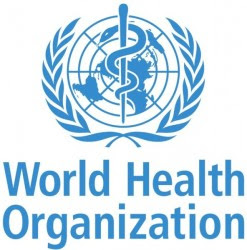
The World Health Organisation (WHO) on Monday disclosed than an estimated five per cent of all cervical cancer cases are attributable to HIV globally, while women living with HIV have a six-fold increased risk of cervical cancer.
WHO, in a statement posted on its website disclosed that “women living with HIV have a six-fold increased risk of cervical cancer when compared to women without HIV.”
The UN health agency released the first estimates of the contribution of HIV to the global cervical cancer burden as it launched the Global Strategy to Accelerate the Elimination of Cervical Cancer on Tuesday.
According to the statement, this higher risk is manifested throughout the lifecycle.
“It manifests with an increased risk of acquiring Human Papilloma Virus (HPV) infection, more rapid progression to cancer, lower chances of regression of pre-cancer lesions, higher rates of recurrence following treatment.
“Worldwide, an estimated five per cent of all cervical cancer cases are attributable to HIV. However, these statistics vary enormously by world regions.
READ ALSO: AfDB approves $440,000 emergency relief assistance for flood victims in South Sudan, Sudan
“In areas with high HIV prevalence, the fraction of cervical cancer attributable to HIV is high and is ≥40 per cent in eight countries, compared to five per cent in 127 countries with lower HIV prevalence.
“This contributes to the stark disparities in cervical cancer burden.
“Eighty-five per cent of women with cervical cancer and HIV live in sub-Saharan Africa, underscoring the major contribution of HIV to the cervical cancer burden in the region.’’
According to the statement, HPV vaccination, screening and treatment for cervical pre-cancer and cancer, which are critical to preventing and managing cervical cancer are yet to be fully scaled up, contributing to the greater burden.
“We must now redouble our efforts and work towards achieving the new WHO cervical cancer elimination targets of 90 per cent HPV vaccination coverage.
“We must work towards achieving 70 per cent screening coverage and 90 per cent access to treatment for cervical pre-cancer and cancer, including access to palliative care by 2030.
“Achieving these targets could reduce more than 40 per cent of new cervical cancer cases and five million related deaths by 2050.’’
The statement quoted Dr Meg Doherty, the Director of the WHO Global HIV, Hepatitis, and Sexually Transmitted Infection (STI) programmes, as saying “we have made great progress in expanding HIV treatment for all who need it.
“We now need to ensure that women living with HIV are not cut short by cervical cancer, an entirely preventable condition through vaccination, screening and treatment.
“On the launch of the Cervical Cancer Elimination Initiative, we recommit to ensuring women, implementing partners and ministries of health have the tools needed to implement our updated guidelines.’’
According to WHO, bringing together a public health approach with comprehensive, woman-centred care could help girls and women living with HIV and at risk of HPV infection to live long and healthy lives.
“Engaging the community of women in advocating for care, providing choice and improving access to vaccination for girls and screening and treatment for women is critical.’’
The statement quoted WHO Assistant Director-General, Dr Nothemba Simelela, as saying “as the world comes together to pledge to eliminate cervical cancer, we must keep our eyes on ending this preventable burden on women and girls who are living with HIV. It is our unfinished business.”

